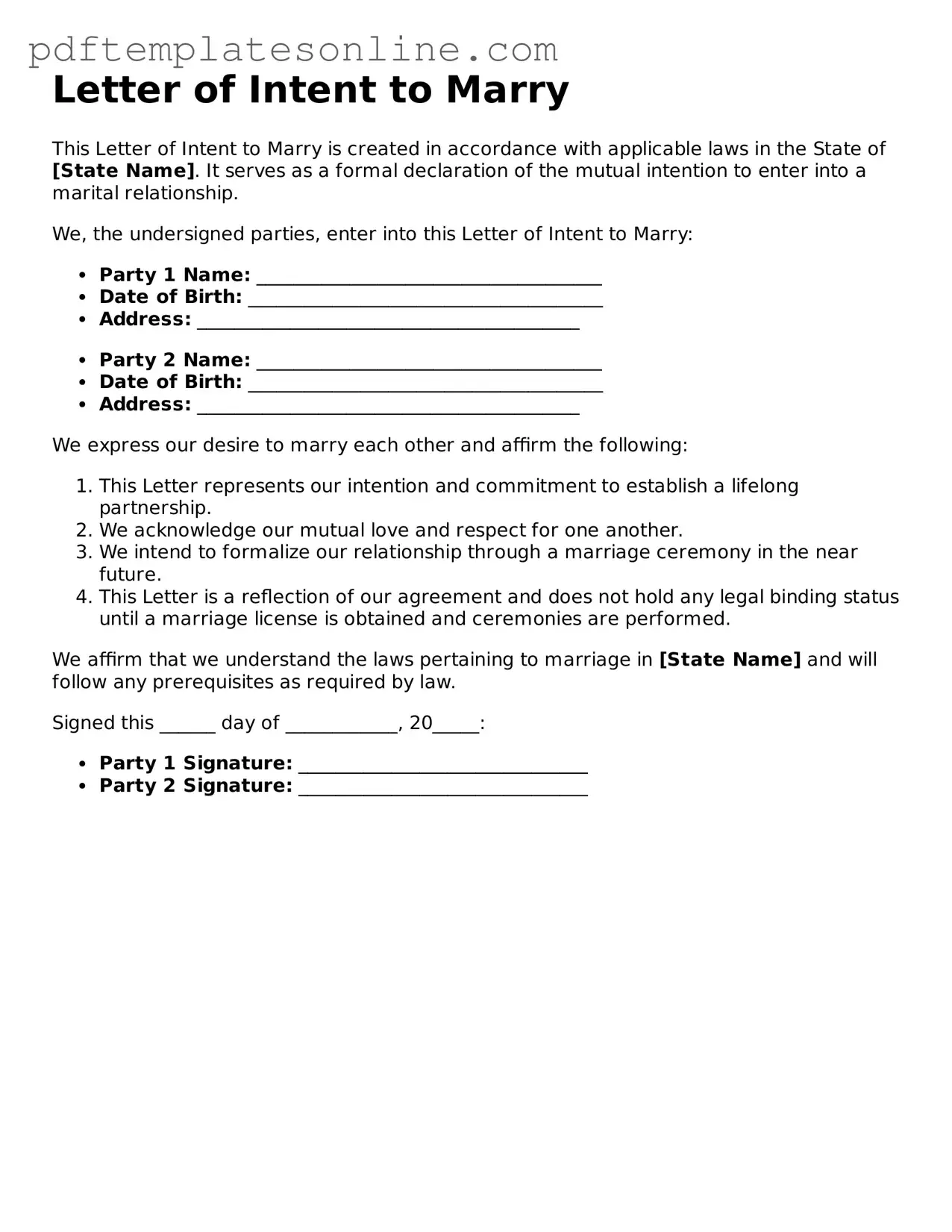Filling out the Letter of Intent to Marry form is an important step for couples planning to tie the knot. However, many individuals make common mistakes that can lead to complications down the line. One frequent error is providing incomplete information. Couples may forget to include important details such as their full names, addresses, or dates of birth. Omitting any of this information can cause delays or even rejection of the application.
Another mistake involves using incorrect or outdated information. It’s essential to ensure that all personal details are current. For example, if someone has changed their name due to a previous marriage or other reasons, failing to update that information can create confusion. Similarly, using an old address can lead to issues with communication from the authorities.
Many people also overlook the importance of signatures. Both parties must sign the form, and it’s crucial that the signatures are clear and match the names provided. A missing signature or a mismatch can result in the form being deemed invalid. Additionally, some may forget to date the form, which is another requirement that can lead to processing delays.
Another common pitfall is not checking the specific requirements of the state or jurisdiction. Each location may have its own rules regarding the Letter of Intent to Marry. Couples should verify what is needed in their area to avoid unnecessary complications. Not doing so can lead to submitting an incomplete or incorrect form.
People sometimes rush through the process, leading to careless mistakes. Taking the time to carefully read the instructions and double-check the information can prevent errors. It’s beneficial to review the form together to ensure everything is accurate and complete.
Additionally, failing to keep a copy of the submitted form is a mistake that can be easily avoided. Having a record of what was submitted can be helpful if any questions arise later. It’s a good practice to maintain personal copies of important documents.
Lastly, couples might forget to follow up after submitting the form. It’s wise to check in with the relevant office to confirm that the application was received and is being processed. This proactive approach can help address any potential issues before they escalate.
